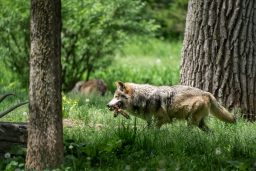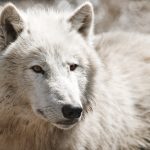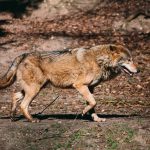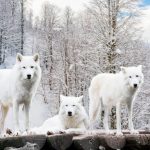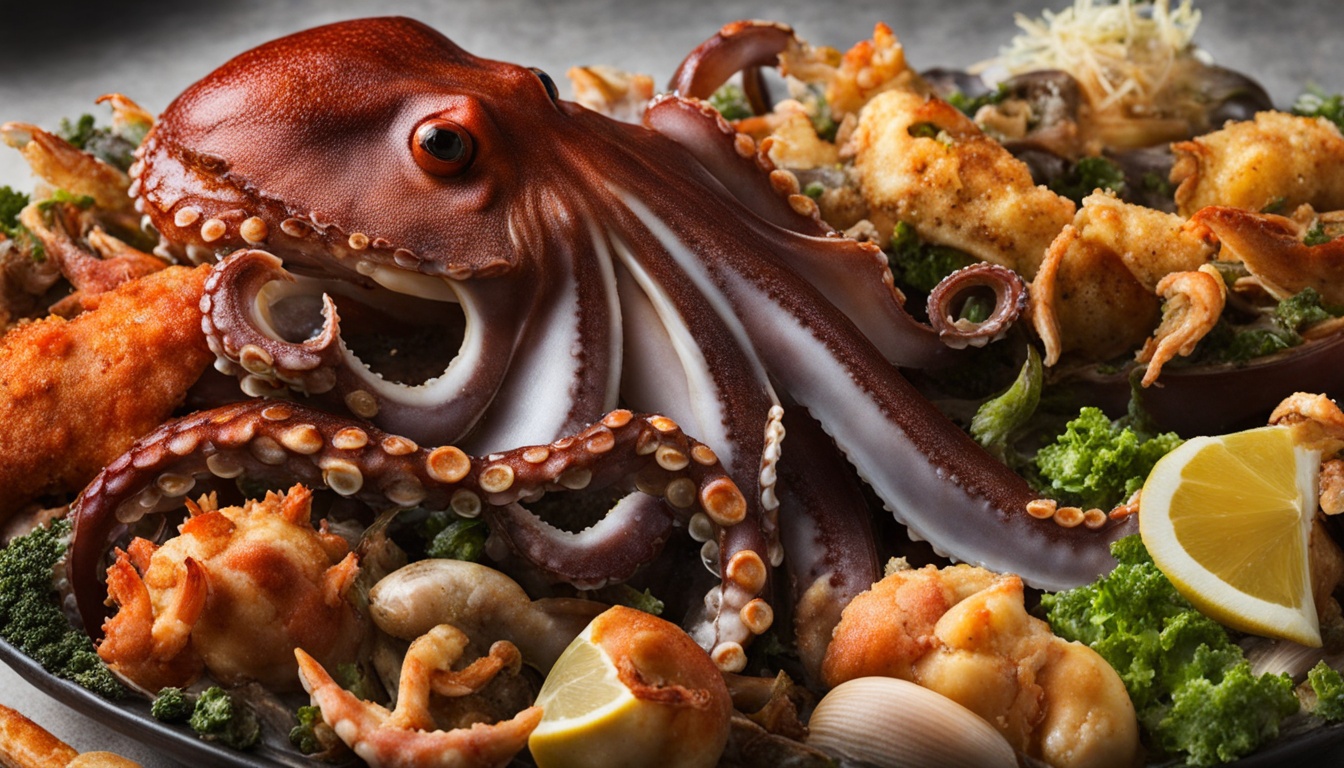Wolves are designed for long chases and can trot literally all day long – covering great distances. But if they want to sprint all wolves can just top 60km/h (38mph).
What Is The Fastest Wolf In The World: Compared:
If you want to compare the speeds of various wolf subspecies (Canis lupus) – you don’t need to. Most wolves are recorded at roughly the same speed in a trot and in sprint. They are – like other dogs – designed to be long-distance hunters. They can travel great distances without tiring – and at the same time – wear out their prey completely before pouncing.
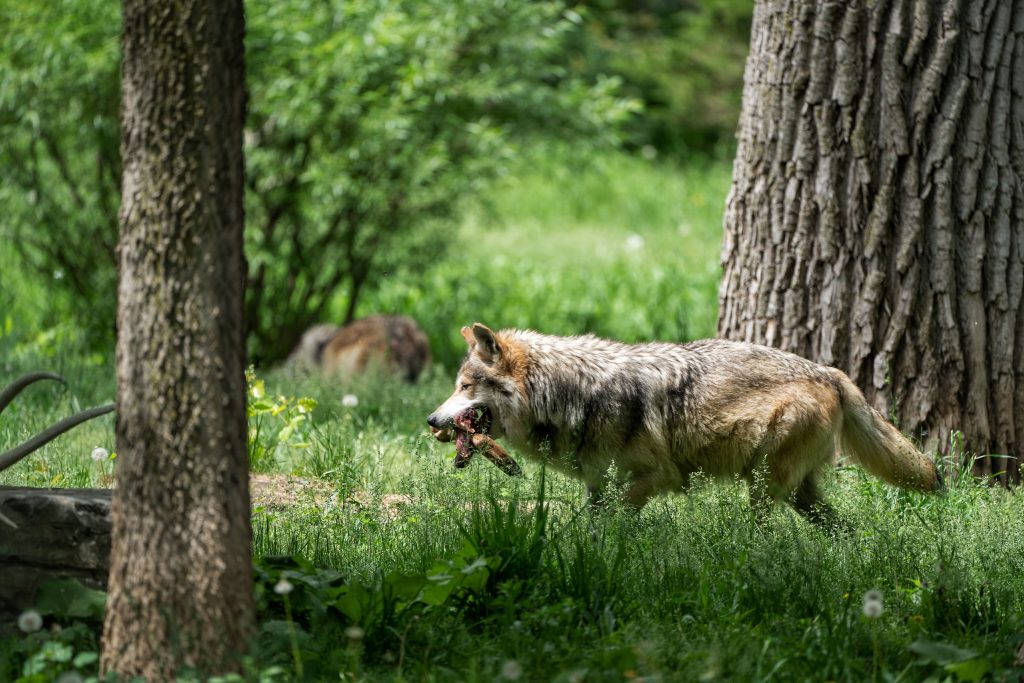
Able to trot through woodland and tundra for hours and hours – all day in some cases – at around 8km/h (5mph) they are able to find and follow their prey in the huge expanse of the wild parks and uninhabited wildernesses of North America and Eurasia. They work in a pack and tire out whatever animals they are chasing – including moose, elk, and caribou. Once they have tracked down and identified the weakest member of the herd – they can then sprint faster than a record-breaking human and end the chase with a successful kill.
Can Foxes Swim as Fast as the Fastest Wolf in the World?
Can foxes swim as fast as the fastest wolf in the world? While foxes are agile swimmers, they cannot match the speed of the fastest wolf. Wolves are known for their powerful strokes and exceptional speed in the water. However, foxes swim efficiently to navigate through aquatic habitats, but they simply cannot outpace their wolf counterparts when it comes to swimming speed.
Why Wolves All Run The Same Speed:
So, why do all wolves run around the same speed when there is so much difference between all the different breeds of dog for example? A Greyhound can run faster than a Great Dane or a Chihuahua. Why is there no big difference between all the different wolves?
All Wolves Are Closely Related:
All the wolves in the northern hemisphere are biologically classified as the same species – just different subspecies. So from the giant Timber Wolf (C. l. occidentalis) to the small Arctic Wolf (C. l. arctos) – they are all technically a Gray Wolf. Just like all the 22 sub-species of Raccoon in North America – these animals are only really called different names because of where they live.
Wolves Are All Apex Predators:
All wolves are at the top of the food chain – or at least equal tops. This means that they aren’t hunted solely by any other animal. Therefore, they only need to run as fast as their prey to survive – rather than faster than a predator. When wolves were evolving, they didn’t need to design their bodies to run any faster than the moose, deer, and caribou. As long as they had stamina to keep up – it was good enough. Plus the fact they go for the slowest or weakest of them even then.
Most Wolves Eat The Same Type Of Prey:
Large ungulates are the favorite prey of wolves – and it takes quite a few wolves to bring one down. And quite a bit of determination. Unlike cats who go for the ‘hide and pounce’ technique – dogs often go for the ‘follow your food until it gets tired’ approach. This means that wolves don’t actually need to run very fast – they just need to be able to keep up with something that is generally quite slow and often stops to feed. Also, it isn’t chasing a single animal at first – it is following a herd of up to several hundred individuals – all at different paces and speeds.
Wolves Have Great Night Vision:
Not only do they have amazing hearing and smell (they can smell blood a mile away) – they have great night vision too. Able not only to see in the dark very well using their tapetum lucidum (a reflective layer at the back of their eye) they also have very sensitive retinas. They are able to detect the smallest of movements immediately. Hunting at night is their forte – and as they can see better than their prey – they have the advantage even if standing still.
Domestic Dogs Are Extreme Wolves:
The domestic dog is currently classed as a subspecies of the same Gray Wolf as all the other wolves – however, it is a special wolf.
Although all dogs are technically Canis lupus too – they have become so wide-ranging in shape and size – that they are hardly recognizable today as the same animal. There are still a few breeds that look wolf-like (like Huskies and Malamutes) and can work in the same unrelenting way – pulling sleds for miles a day without any issues.
But humans had other plans for dogs. We needed dogs that could catch rabbits and hares for our own food. Over time we created the sight hounds – the fastest of which – the Greyhound – can top 72km/h (45mph) beating the wolves by far. By changing their mobility from long-distance trotter to fast sprinter, humans changed the wolf into something more useful: the fastest wolf.

